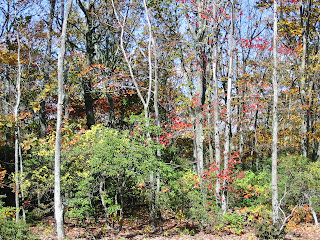Tell the truth, it looked just awful in full daylight. It was nicked and dinged and dented and scratched from its wobbly foot to its tarnished brass tuning keys. The neck had cracked badly at some point and an inexpert repairer had tried to fill it with wood putty and touch it up, a badly botched job. Someone had dabbed shiny little dots along the neck to help them remember, I guess, where certain notes were. The strings were frayed. The bridge was missing part of a corner. The built-in pickup hadn't been picked up in ages. And someone long ago had painted a marking that looked like some kind of Oriental calligraphy, or so I thought.
It was an old school bass, manufactured in 1946 by the Kay Musical Instrument Co., so named for Henry Kay "Hank" Kuhrmeyer, who bought the company and renamed it in the 1920s and turned out about a jillion inexpensive basses, and some expensive ones, over the years. And it was made the same year I was, so we had a lot in common. We would spend the rest of our days together, I thought.
I had always like the bass -- had played an old brass Sousaphone and a shiny Conn upright bass in the band at Aycock Junior High School in Greensboro in the late 1950s and early '60s.
And a couple years later when Woody Allen and Fred Birdsong and I formed a little band that would be the next Kingston Trio (it wasn't), I borrowed a friend's dad's old aluminum bass fiddle, painted brown to badly resemble real wood. Jimmy "Squirrel" Garrison joined us before long and we played all over Greensboro and a few out-of-town dates, including, of all things, a drug store opening in Danville VA and followed up with a live performance on a local radio station there.
We thought we were on our way. We were -- one to Auburn, one to the Army, one to Lehigh, one to Chapel Hill. But still we got together on holidays and military leaves and summer breaks, and I always promised I'd get a good bass to go with the Martin guitars and Gibson 5-strings and this lovely Santa Cruz that Squirrel made sing.
It was years before I found what I wanted and could pay cash money. As knocked up as it was, it put out this amazing sound, full, ripe, authoritative and easy on these stubby fingers I inherited from South Carolina forebears. I put a new Fishman pickup on it to put a direct injection into this dandy Bose sound system we scraped up the money to help fill Yankee Stadium in case we got invited to bring our music to Gotham. Never did, but we played some fun places over the years in Virginia, North Carolina, South Carolina, Georgia and, just briefly, Tennessee. Here's a photo of that old bass posing with me, Woody, and Squirrel one night up in the Cane Creek Valley outside Asheville in 2005. In the dim light of that evening the bass looked a lot better than it did during the day.

That old Kay just would fit in the bed of my pickup truck, and we logged quite a few miles in it before a lightning bolt struck our new house in 2010 one June night when no one was within five miles, and everything burned to cinders. Never found a trace of the Kay.
Three months later we were in California for our niece's wedding in a lovely, ancient redwood forest. The band was a wonderful group called the California Honey Drops, and the bass player was making this old bass with some dings and dents do things I could only dream about. When the band took a break I wandered over to take a look. It was a 1947 Kay, he told me. "Funny thing," he went on. "I have this expensive as hell bass at home, and when I play it at performance, people come up to me and ask, 'Why aren't you playing that old bass? It sounds a whole lot better than that fancy one.'"
I knew what he meant. Some of those old Kays could make a joyful noise.
And I thought about that old Kay when this week's New Yorker magazine arrived in the mail. The cover shows a little kid with a little violin case looking in the door of a studio, where a composer was working on a score on a baby grand, surround by seven or eight big old bass fiddles and a timpani of some sort. Sure, maybe they were full-sized cellos or something, but to my mind they looked like acoustic basses -- doghouse basses, some folks call 'em, or uprights. I know how that kid felt. I never really learned to play the Kay that well, but it was forgiving enough that if you could pick out the right notes often enough and throw in a little run every now and then on the back beat, you could play bluegrass, folk, blues and even a bit of what Squirrel liked to call, with a grin and a glint in his eye, acoustic listening music.
A while back I found a fellow over in Elk Creek, VA, who had lovely looking bass for sale -- a 2004 Engelhardt, the successor company to the maker once known as Kay. It's a beautiful thing -- rosewood neck, shiny brass tuners, flawless varnish, not a nick on it.
Shoot, I'm almost afraid to pick it up. I'm hard on instruments, and that old beat-up Kay was kind of like me -- scarred around the garboard strakes, worn about the scrollwork and not quite as upright as it once was. But the tone's nice and the action is a bit more suited to my fingers, and when I draw a bow across those G, D, A and E strings, it makes a most satisfying bass line. I believe I'll go see right now if I can still find the progression for "Abilene" and "Make Me a Pallet." It was around here somewhere, last time I looked.







































